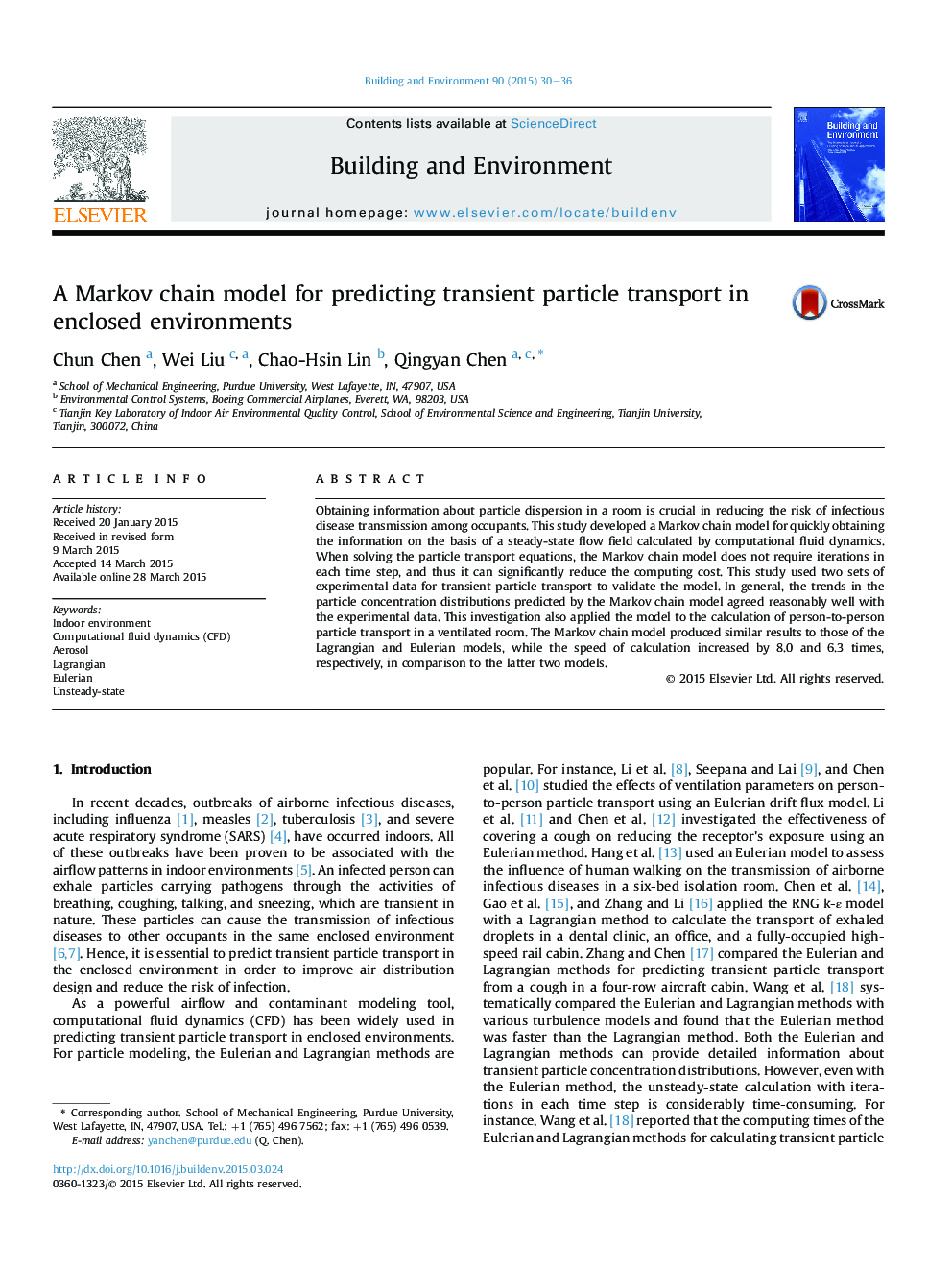| Article ID | Journal | Published Year | Pages | File Type |
|---|---|---|---|---|
| 247854 | Building and Environment | 2015 | 7 Pages |
•A Markov chain model was developed for predicting transient particle transport.•The Markov chain model does not require iterations in each time step.•The Markov chain model can significantly reduce the computing cost.•The Markov chain model can predict particle transport with reasonable accuracy.
Obtaining information about particle dispersion in a room is crucial in reducing the risk of infectious disease transmission among occupants. This study developed a Markov chain model for quickly obtaining the information on the basis of a steady-state flow field calculated by computational fluid dynamics. When solving the particle transport equations, the Markov chain model does not require iterations in each time step, and thus it can significantly reduce the computing cost. This study used two sets of experimental data for transient particle transport to validate the model. In general, the trends in the particle concentration distributions predicted by the Markov chain model agreed reasonably well with the experimental data. This investigation also applied the model to the calculation of person-to-person particle transport in a ventilated room. The Markov chain model produced similar results to those of the Lagrangian and Eulerian models, while the speed of calculation increased by 8.0 and 6.3 times, respectively, in comparison to the latter two models.
